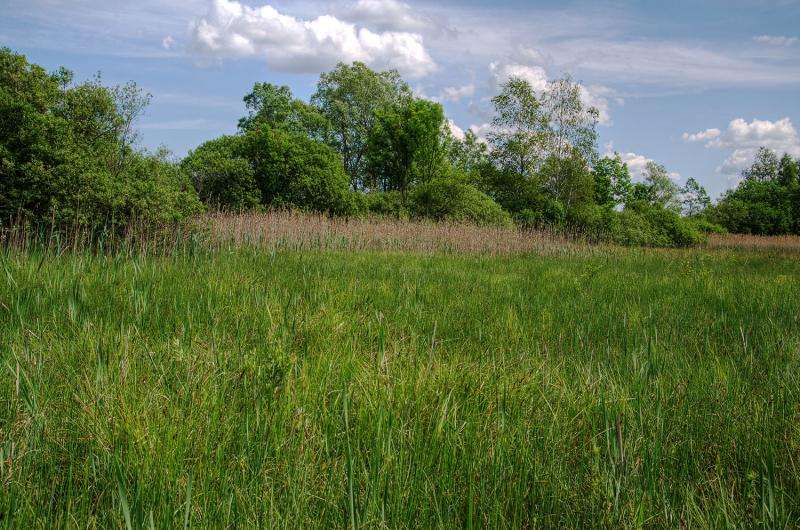Researchers studied peat soils extracted from peatland in Bavaria similar to this fen, also located in Germany. Credit: Paul Schulze, CC-BY 4.0
Utilizing microcosms of peat soil, researchers mimicked naturally fluctuating conditions to study sulfate-reducing microbes and how they regulate methane production in peat microbial communities.
Numbers by themselves don't tell the whole story. Microbes found in low abundance can play key roles in regulating important biogeochemical cycles, but are not easily studied. The focus in this study on microbial sulfate reducers such as uncultivated Desulfosporosinus species gives researchers insights on how they regulate the carbon and sulfur cycles in peatlands, a major terrestrial carbon reservoir.
Peatlands are thought to store a third of the world's terrestrial carbon, and there are concerns that some of the trapped carbon could be released due to climate change. The sulfur cycle in peatlands is not well studied, but plays a role in mitigating methane production from this ecosystem. As part of a Community Science Program proposal accepted by the U.S. Department of Energy Joint Genome Institute (DOE JGI), a DOE Office of Science User Facility, a research team led by Bela Hausmann of the University of Vienna took samples of acidic peat soil from Germany, incubated them with various amounts of additional sulfate, and looked at how the sulfate levels impacted methane production in these artificial peat microcosms.
As reported in the study published online March 25, 2016 in the ISME Journal, through sequencing metagenomic DNA and metatranscriptomic RNA, they identified low-abundance microbes that respond to the presence or absence of sulfate and which play roles in regulating methane production in these ecosystems. For example, the researchers found that methane production in sulfate-stimulated microcosms was reduced by 83 to 100 percent compared to the control peat microcosms with no added sulfate. These results emphasize the importance of the rare microbial biosphere not only as a reservoir of dormant microorganisms but also as active participants in biogeochemical processes that buffer against climate change. Understanding these rare microbes and their roles as mediators of biogeochemical processes offers researchers insights into both the characterization of microbial ecological functioning and to mitigate global climate change.
More information: Bela Hausmann et al. Consortia of low-abundance bacteria drive sulfate reduction-dependent degradation of fermentation products in peat soil microcosms, The ISME Journal (2016). DOI: 10.1038/ismej.2016.42
Journal information: ISME Journal
Provided by DOE/Joint Genome Institute























